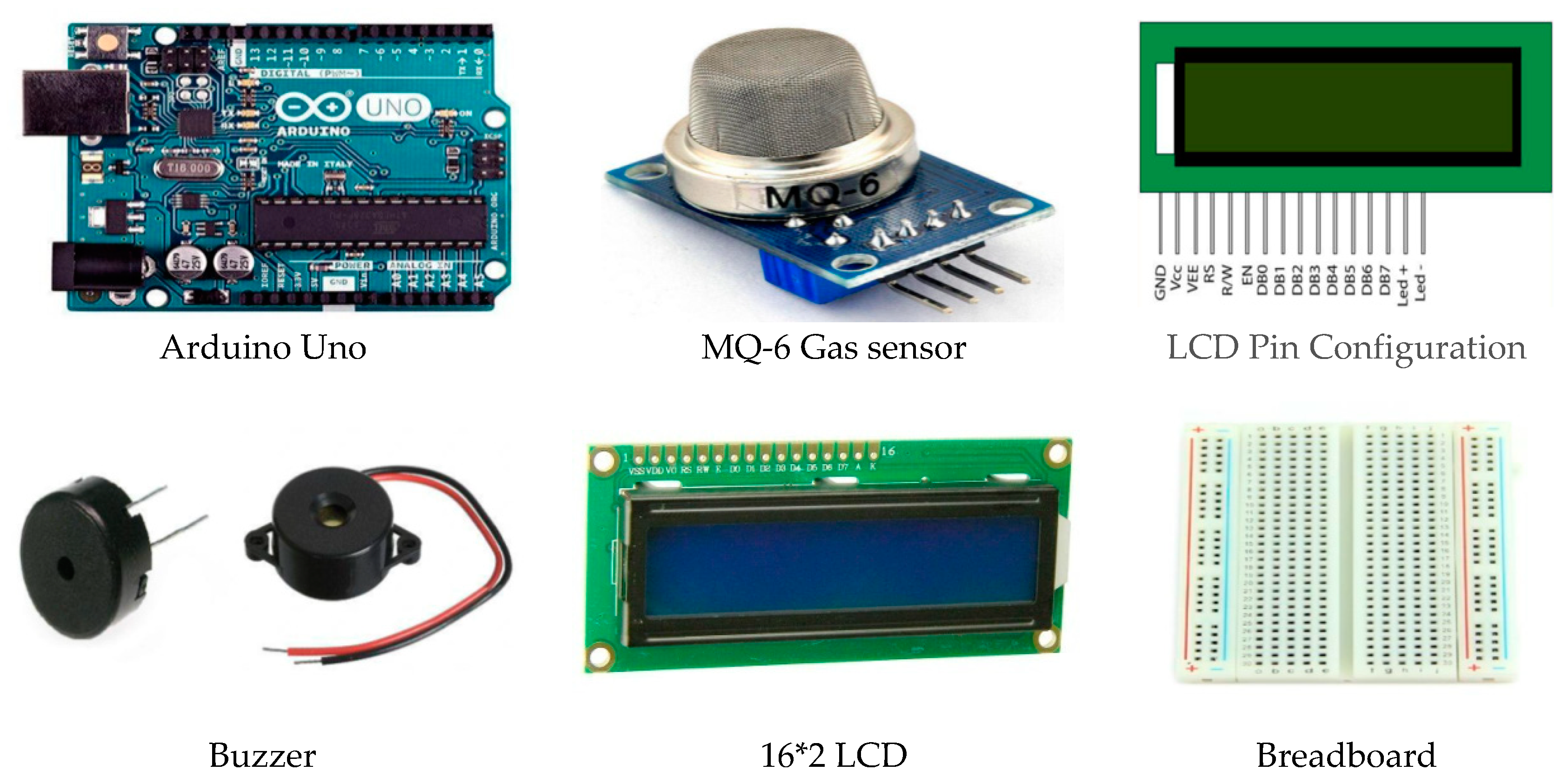
Introduction
The "Gas Leakage Sensor" project aims to design and develop a gas leakage detection system using readily available components. This project addresses the need for a cost-effective and reliable solution to detect gas leaks in residential and small-scale industrial environments, enhancing safety and preventing potential hazards.
Objectives
- Design and construct a gas sensor based on MQ series gas sensors.
- Develop a signal processing system to analyze sensor data.
- Integrate the gas sensor with an alarm system for real-time gas leak detection.
- Ensure the system's responsiveness to various gases, including LPG, methane, and propane.
- Implement safety measures and guidelines for handling gas sensors.
Components and Materials
- MQ series gas sensor (e.g., MQ-2, MQ-5, or MQ-7)
- Microcontroller (e.g., Arduino Uno)
- Relay module
- Buzzer and LED for alarm indicators
- Power supply
- Enclosure for the sensor
- Connecting wires and breadboard
- Gas source for testing (e.g., a controlled gas cylinder)
Project Design
Gas Sensor Assembly
- Connect the MQ gas sensor to the microcontroller using appropriate pins.
- Provide the sensor with a stable power supply voltage.
- Implement a calibration process to ensure the sensor's accuracy.
- Enclose the sensor in a housing to protect it from environmental factors.
Signal Processing and Alarm System
- Program the microcontroller to read analog data from the gas sensor.
- Set up a threshold level for gas detection.
- Implement an algorithm to trigger the alarm (buzzer and LED) when gas levels exceed the threshold.
- Enable remote monitoring and notifications if required.
Safety and Precautions
- Ensure safe handling of gas sensors, especially during calibration and testing.
- Establish protocols for responding to gas leaks and system malfunctions.
- Adhere to safety standards and guidelines during the project.
Testing and Validation
- Conduct controlled gas leakage experiments to test the sensor's responsiveness.
- Evaluate the system's response time and sensitivity to different gases.
- Examine the system's performance under various environmental conditions.
- Verify the reliability of the gas leakage sensor system.
Conclusion
The "Gas Leakage Sensor" project presents a practical and affordable solution for detecting gas leaks in residential and small-scale industrial settings. By implementing a gas sensor, signal processing, and alarm system, this project contributes to enhancing safety and preventing potential gas-related hazards. Additionally, the project emphasizes the importance of safety measures and protocols when working with gas sensors.
